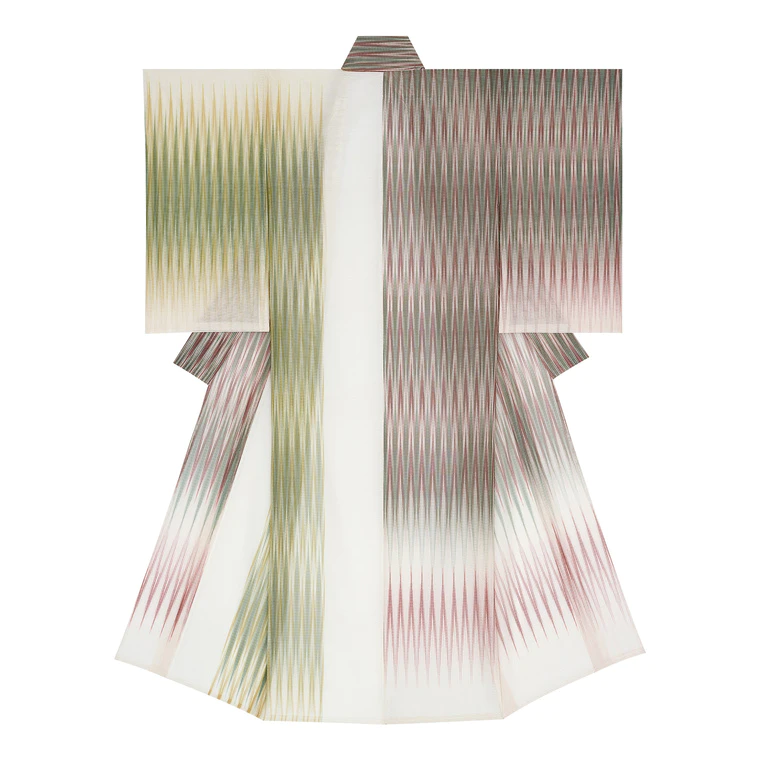Kimono of figured gauze. “Spirit of rose”
Year.2018Yoshinori Tsuchiya
1954 -- Textiles(Living National Treasure)
-
Price Range
$7,000 - 35,000
Info
The prices of the artworks on Gallery Japan are determined by the artists themselves and are published directly on the website.
close - Awards at Japan Kōgei Assoc. Exhibitions : 7
About the Artwork
Inspired by the ballet “Le Spectre de la Rose” performed by Vaslav Nijinsky, I expressed the contraries in life such as success and discouragement, sanity and insanity, men and women in the katamigawari, a kimono using a textile with a different texture or pattern on the back side of the kimono.
Description
-
CategoryTextiles
-
MaterialsRaw silk (Unrefined silk thread)
Warp threads - 4 among 21 two-folded
Weft threads - 6 among 21 twisted -
Year presented2018
-
RarityUnique
Techniques Used
Kasuri weaving
Kasuri weaving (kasuriori, “blurred weave”) is a type of ikat weaving done with threads that have been resist dyed, leaving sections of the thread undyed. The threads are then aligned and woven to create stripes, checkered patterns, or pictorial motifs.
Selected exhibitions
- The 65th Japan Traditional Kōgei Exhibition (2018)
- Selected
Please feel free to contact us to commission work, check artworks available for purchase etc.

